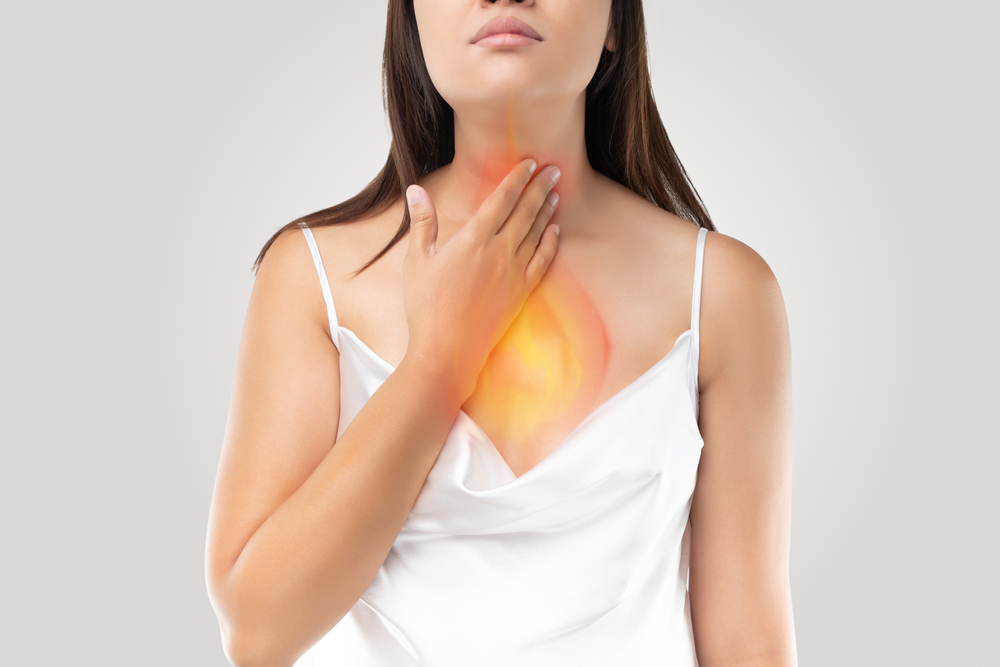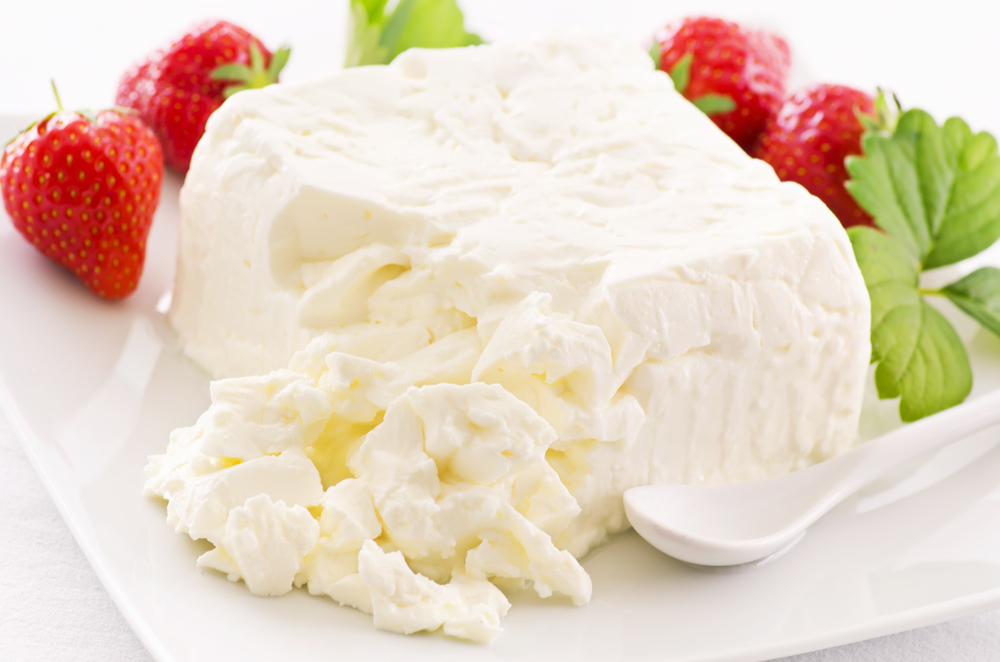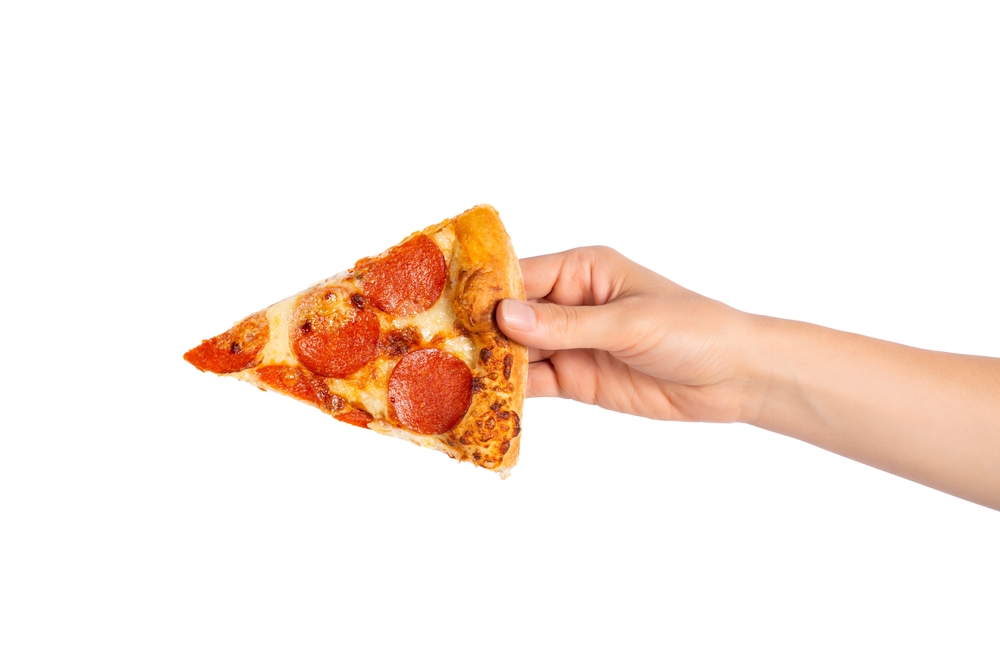There are numerous meals that can aggravate acid reflux symptoms. One of the most frequent offenders is cheese.

Since cheese contains a lot of fat, it can slow down digestion and lead to esophageal reflux disease. Heartburn, chest discomfort, and other painful symptoms may result from this.
While some kinds of cheese could be worse for acid reflux sufferers than others, this is generally accepted.
Soft cheeses with high-fat content and slow digestion, such as mozzarella and brie, are particularly difficult to digest.
For certain folks, even tougher cheeses like cheddar and parmesan can be problematic. However, it’s crucial to remember that every person’s body is unique, so what causes symptoms in one person could not do so in another.
What is Acid Reflux?
Acid reflux is a common digestive condition that occurs when stomach acid flows back into the esophagus, causing irritation and discomfort. The esophagus is the tube that connects the throat to the stomach.

When the lower esophageal sphincter, which is a ring of muscle that acts like a valve between the stomach and the esophagus, doesn’t close properly, stomach acid can flow back into the esophagus.
This backflow of stomach acid can cause a burning sensation in the chest, known as heartburn.
Other symptoms of acid reflux may include regurgitation of food or sour liquid, difficulty swallowing, coughing, wheezing, and chest pain.
Acid reflux is a relatively common condition, affecting around 20% of the population. It can be triggered by certain foods and drinks, such as fatty or fried foods, citrus fruits, tomatoes, chocolate, coffee, and alcohol.
Other factors that can contribute to acid reflux include obesity, pregnancy, smoking, and certain medical conditions such as a hiatal hernia.
The stomach is designed to handle the corrosive effects of stomach acid, but the esophagus is not. When stomach acid repeatedly flows back into the esophagus, it can cause damage to the lining of the esophagus.
Over time, this can lead to complications such as esophagitis, ulcers, strictures, and Barrett’s esophagus, which is a precancerous condition.
Therefore, it is important to manage acid reflux symptoms and seek medical attention if they persist or worsen.
Why Does Cheese Trigger Acid Reflux?
When it comes to acid reflux, cheese is one of the foods that can trigger symptoms for some people. But why does cheese cause acid reflux?

Cheese is a dairy product, and many people with acid reflux find that consuming dairy products can worsen their symptoms.
Dairy products, including cheese, can be high in fat, which can slow down the digestive process and increase the amount of acid in the stomach.
In addition to its high-fat content, cheese is also an acidic food. When consumed, acidic foods can increase the production of stomach acid, which can lead to acid reflux symptoms.
It’s important to note that not all types of cheese are created equal. Some cheeses, such as feta and goat cheese, are lower in fat and may be better tolerated by people with acid reflux. However, high-fat cheeses such as cheddar, parmesan, and gouda can be more problematic.
In addition to cheese, there are several other foods and beverages that can trigger acid reflux symptoms. These include:
- Fatty foods
- Fried foods
- Meats
- Carbonated beverages
- Coffee
- Caffeine
- Peppermint
If you are experiencing acid reflux symptoms, it may be helpful to keep a food diary to identify which foods are triggering your symptoms.
By avoiding these trigger foods, you may be able to reduce the frequency and severity of your acid reflux symptoms.
In addition to avoiding trigger foods, making other dietary changes can also be helpful for managing acid reflux.
For example, eating smaller, more frequent meals throughout the day can help to prevent acid reflux symptoms.
It’s also important to avoid eating too close to bedtime, as lying down can worsen acid reflux symptoms.
Are There Any Types of Cheese That Are Safe for Acid Reflux?
When it comes to acid reflux, cheese is often considered a food to avoid. However, not all cheeses are created equal, and some types may be safe for those with acid reflux.

Here are some types of cheese that may be safe to consume:
Low-Fat Cheeses
Low-fat cheeses, such as cottage cheese and feta, are generally easier on the digestive system and may be less likely to trigger acid reflux symptoms. These cheeses are also lower in fat, which can help reduce the risk of heartburn.
Hard Cheeses
Hard cheeses, such as parmesan and cheddar, are generally lower in lactose than soft cheeses, which can make them easier to digest for those with lactose intolerance. These cheeses are also less likely to trigger acid reflux symptoms.
Non-Dairy Cheese Alternatives
For those who are lactose intolerant or prefer to avoid dairy, there are non-dairy cheese alternatives available.
These products are typically made from grains, such as rice or soy, and maybe a good option for those with acid reflux.
It is important to note that while some types of cheese may be safe for those with acid reflux, everyone’s triggers and symptoms are different.
It is important to pay attention to your body and avoid any foods that seem to trigger your symptoms.
In addition to cheese, other foods that may trigger acid reflux symptoms include grains, chocolate, and caffeine.
Dark chocolate contains theobromine, which can relax the lower esophageal sphincter and allow stomach acid to flow back into the esophagus.
It is important to limit your intake of these foods and pay attention to your body’s reactions.
Other Foods and Drinks That Trigger Acid Reflux
When it comes to acid reflux, cheese is not the only food that can trigger symptoms. There are other foods and drinks that we should be aware of and avoid if we experience acid reflux.
Carbonated Drinks and Soda
Carbonated drinks and soda can increase the amount of air we swallow, which can lead to bloating and reflux symptoms. Additionally, carbonated drinks are acidic and can irritate the esophagus, leading to heartburn.
Coffee and Caffeine
Coffee and other caffeinated drinks can stimulate the production of stomach acid, leading to acid reflux symptoms. Caffeine can also relax the lower esophageal sphincter, which can allow stomach acid to flow back into the esophagus.
Fatty and Fried Foods
Fatty and fried foods can take longer to digest, which can increase the amount of time that stomach acid is in contact with the esophagus. This can lead to heartburn and other acid reflux symptoms.
Meats
Meats, especially those that are high in fat, can be difficult to digest and can increase the production of stomach acid. This can lead to acid reflux symptoms, especially if we eat a large portion or eat meat late at night.
Carbonated Beverages
Carbonated beverages, like beer and champagne, can increase the amount of air we swallow, leading to bloating and reflux symptoms. Additionally, these drinks are acidic and can irritate the esophagus, leading to heartburn.
In conclusion, cheese is not the only food that can trigger acid reflux symptoms. We should also be aware of other foods and drinks that can irritate the esophagus and increase the production of stomach acid.
By avoiding these triggers, we can reduce our risk of experiencing acid reflux symptoms.
Lifestyle Changes to Help Reduce Acid Reflux Symptoms
When it comes to acid reflux, lifestyle changes can be very helpful in reducing symptoms. Here are some things that we can do to help alleviate the discomfort:

Eating Habits
- Eat smaller, more frequent meals throughout the day instead of three large meals.
- Avoid eating within two to three hours of bedtime.
- Avoid laying down immediately after eating.
- Try to eat slowly and chew food thoroughly.
- Avoid eating foods that trigger heartburn, such as spicy or fatty foods, citrus fruits, and tomatoes.
Sleep Habits
- Elevate the head of the bed 6 to 8 inches by placing blocks under the bed frame or using a wedge pillow.
- Sleep on your left side to reduce acid reflux symptoms.
- Avoid eating or drinking anything within two to three hours of bedtime.
Smoking
- Quit smoking as smoking can decrease the lower esophageal sphincter’s ability to function properly.
Weight Management
- Maintain a healthy weight as excess pounds can put pressure on your abdomen, pushing up your stomach and causing acid to reflux into your esophagus.
Other Lifestyle Changes
- Wear loose-fitting clothing to avoid putting pressure on your abdomen.
- Avoid bending over or exercising immediately after eating.
- Avoid coughing or clearing your throat frequently as it can irritate the throat and cause acid reflux symptoms.
- Try to reduce stress as stress can trigger acid reflux symptoms.
Making these lifestyle changes can help reduce acid reflux symptoms and improve overall quality of life.
However, if symptoms persist, it’s important to consult with a healthcare professional, such as an MPH, for further evaluation and treatment.







Add comment